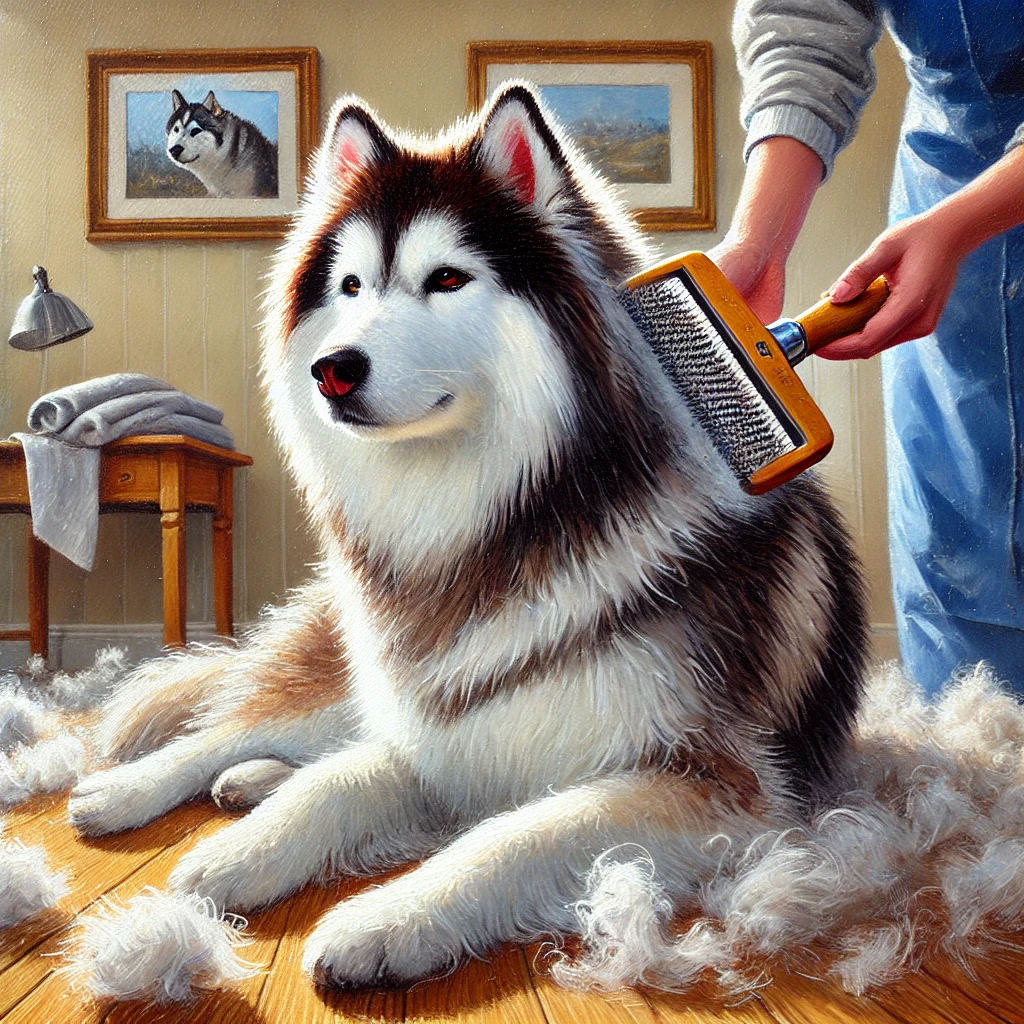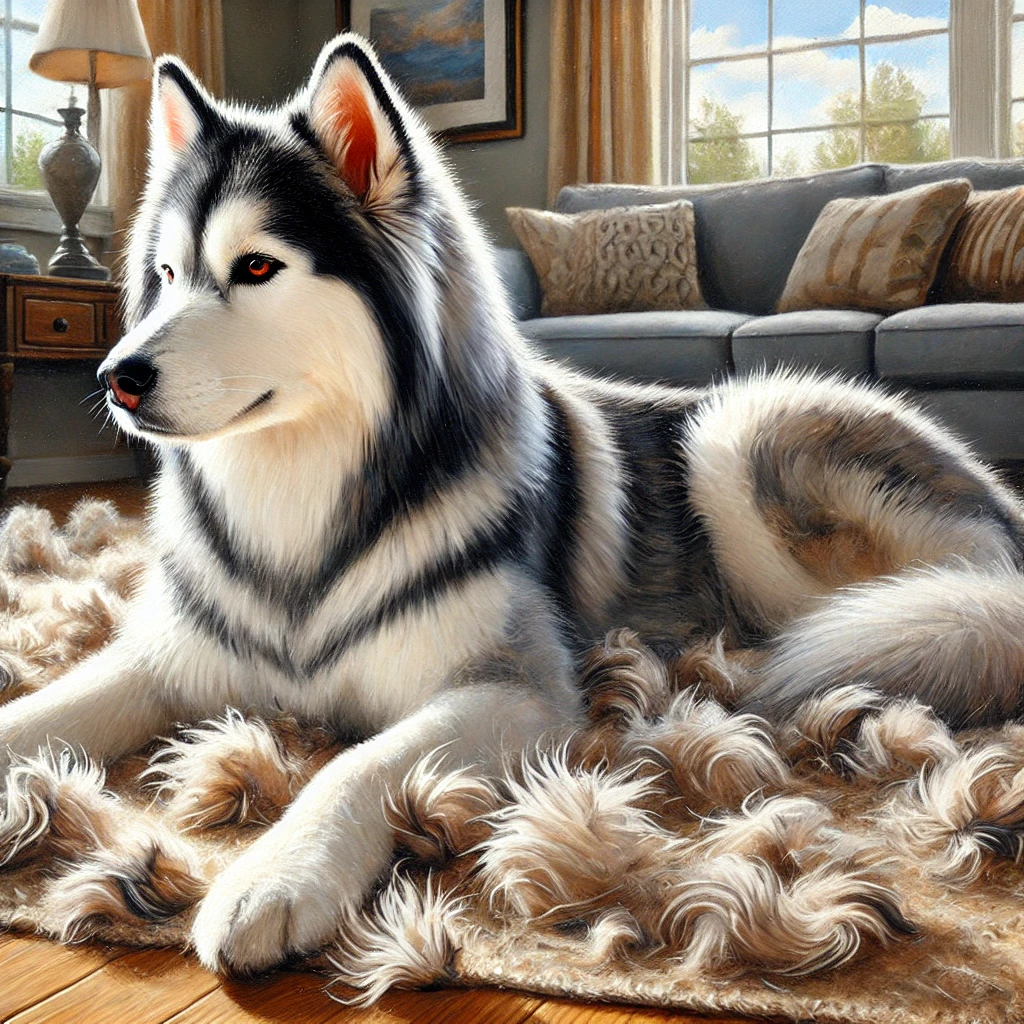So, you’re thinking about bringing a Siberian Husky into your life—or maybe you already have one bounding around at home. Either way, the burning question on your mind is probably, “Do Siberian Huskies shed?” The answer? A resounding yes! Huskies are champion shedders, and it’s something every potential Husky parent should be prepared for.
No dog is entirely free from shedding, but Huskies take it to the next level. With their thick, winter-ready coats, they tend to lose a good amount of hair all year round. But don’t let this deter you! In this guide, we’ll dive deep into everything you need to know about Husky shedding, grooming, and care so you’re fully prepared to handle the fur storm.

Understanding the Husky Coat
Given the harsh climates of Siberia, Huskies evolved with a double coat that is truly remarkable. Their dense fur helps keep them warm in freezing weather, and even harsh winds. Huskies are so at home on the ice that they will gladly curl up and go to sleep in it rather than leave!
But their thick, insulating fur is working against them when they find themselves in a warmer climate or heated home. The coat of the Huskies is made up by two layers: a topcoat which presents protective tough guard hairs and an undercoat that consists in soft, dense fur. This 2-coat combo makes them indestructible as far as the cold is concerned but wilt in hotter temperatures, resulting in blowing their coat all year long.
How Often Do Huskies Shed?
Huskies Shed All Of The Time Normally But Twice A Year, They Blow Their Coat — This Means That Huskies Both Male And Female Can Become Excessive Shedders. Huskies in cooler northern climates often shed on a seasonal timeline, while warmer locales can accommodate shedding year-round. In the spring they shed their dense undercoat to prepare for summer. Their winter coat grows in the fall, so you get more shedding to clean up.

We all have had different Husky experiences. A few owners will swear their dog only sheds twice a year, whereas the rest of us can commiserate in its perpetual fluff-fest on top. Essentially, if you are in a warmer climate or keep your home heated year-round, you will see that shedding happens more frequently.
What Months Are the Heaviest for Husky Shedding?
While Huskies shed all year, spring and fall are the main shedding seasons. As daylight changes, Huskies start to shed their coats in preparation for the coming season. Spring shedding generally lasts from March to early June, and fall shedding happens between September and November.
The warmer it gets, the more hair you’ll likely see as summer approaches. For many first-time Husky owners, spring shedding season is a real eye-opener—especially with that fine, fluffy undercoat that seems to settle everywhere.
Can You Stop Huskies from Shedding?
The short answer? No. Huskies are born shedders, and there’s no way to stop the shedding completely. But you can minimize the impact by setting up a regular grooming routine to control the fur fallout.
Your Husky Grooming Toolkit

Here’s a list of essential grooming tools that’ll make managing your Husky’s shedding easier:
- Undercoat Rake: With wide-spaced teeth, this tool gets through the topcoat and pulls out loose undercoat hairs.
- Slicker Brush: This pin-style brush helps remove loose fur and keeps the coat tangle-free.
- Soft Towels: Perfect for drying your dog after a bath, which helps manage shedding.
- Small Scissors: Not for trimming the coat—don’t do that! Use them to keep paw hair neat and cool.
- Vacuum Cleaner: A powerful vacuum (preferably one designed for pet hair) will help keep your home fur-free.
- Hairdryer: Some dogs tolerate it well, while others may be nervous. Be gentle, and opt for a dog-specific dryer if needed.
- High-Quality Shampoo and Conditioner: A good dog shampoo can make all the difference by maintaining coat health.
- Dog Treats: Rewarding your dog for being patient during grooming makes the experience more enjoyable for them.
Some owners prefer to take their Huskies to professional groomers, but many find that grooming at home strengthens the bond with their pet. Start when they’re young to get them accustomed to the process!
Keeping Your Husky’s Coat Healthy Through Diet
Diet plays a key role in managing shedding. A well-balanced, high-quality diet keeps your dog’s coat healthier and less likely to shed excessively. Fresh, clean water is just as essential since dehydration can cause hair loss and other health issues.
If you notice an increase in shedding outside of the usual seasons, consider potential food allergies or nutritional deficiencies. A vet can provide guidance on any changes that might help.
Should You Ever Clip a Husky’s Coat?
You might be tempted to give your Husky a trim in hot weather, but it’s a big no-no! The double coat helps them regulate body temperature by allowing cool air to reach the skin while reflecting sunlight. Shaving or clipping removes this natural protection, making your dog more vulnerable to overheating, sunburn, and even heatstroke.
The only time a Husky’s coat should be clipped is in a medical emergency. Clipping for aesthetics or comfort can have serious consequences, so leave their coat intact!
So, Do Siberian Huskies Shed?
Absolutely—they’re champion shedders! But the time and effort spent on grooming can be well worth it. If you’re not ready for a home filled with fur, a Husky might not be the best match. However, if you’re willing to invest in grooming, vacuuming, and regular brushing, the joy of having a Husky will outweigh the extra hair.
Conclusion
For those who want the Husky look with less shedding, consider a Husky crossbreed like a Siberian Indian Dog or Huskita (a Husky-Akita mix). While they won’t shed as much as a full-blooded Husky, they’ll still have similar characteristics.
In the end, if you’re prepared to take on the challenge, a Husky’s loyalty, intelligence, and spirited personality are well worth the extra work. They’re not just pets—they’re family, and every fur-covered moment is worth it.


